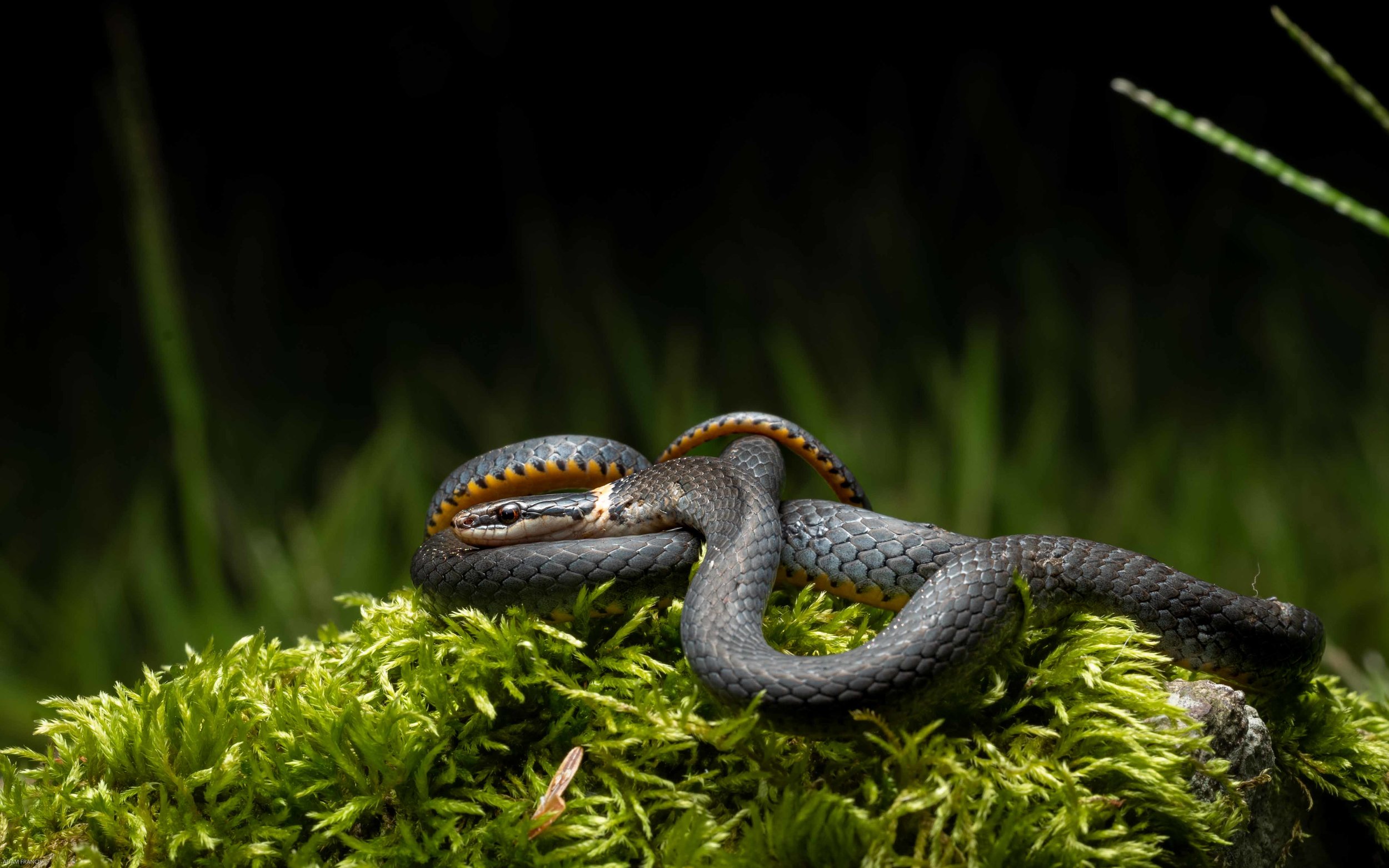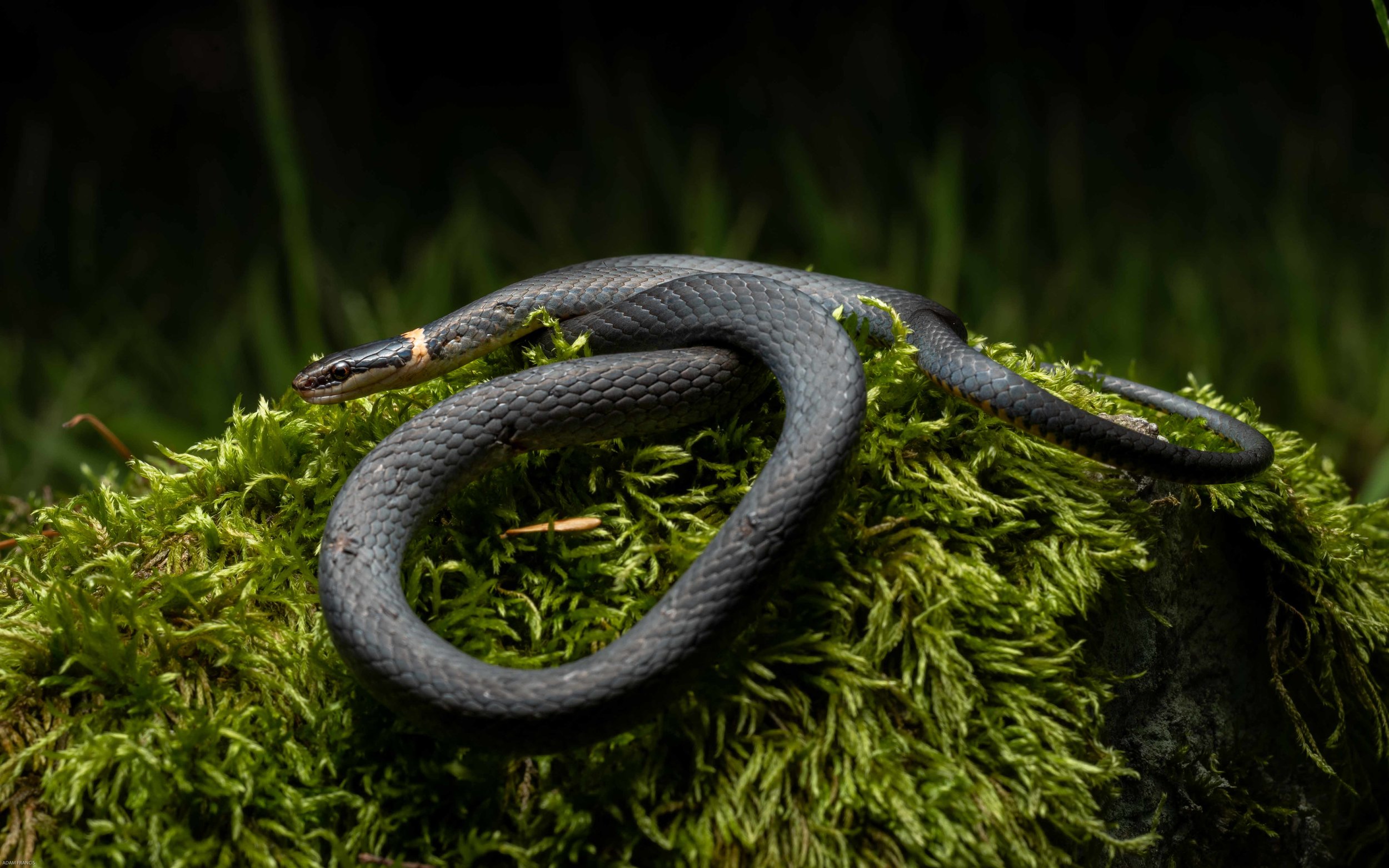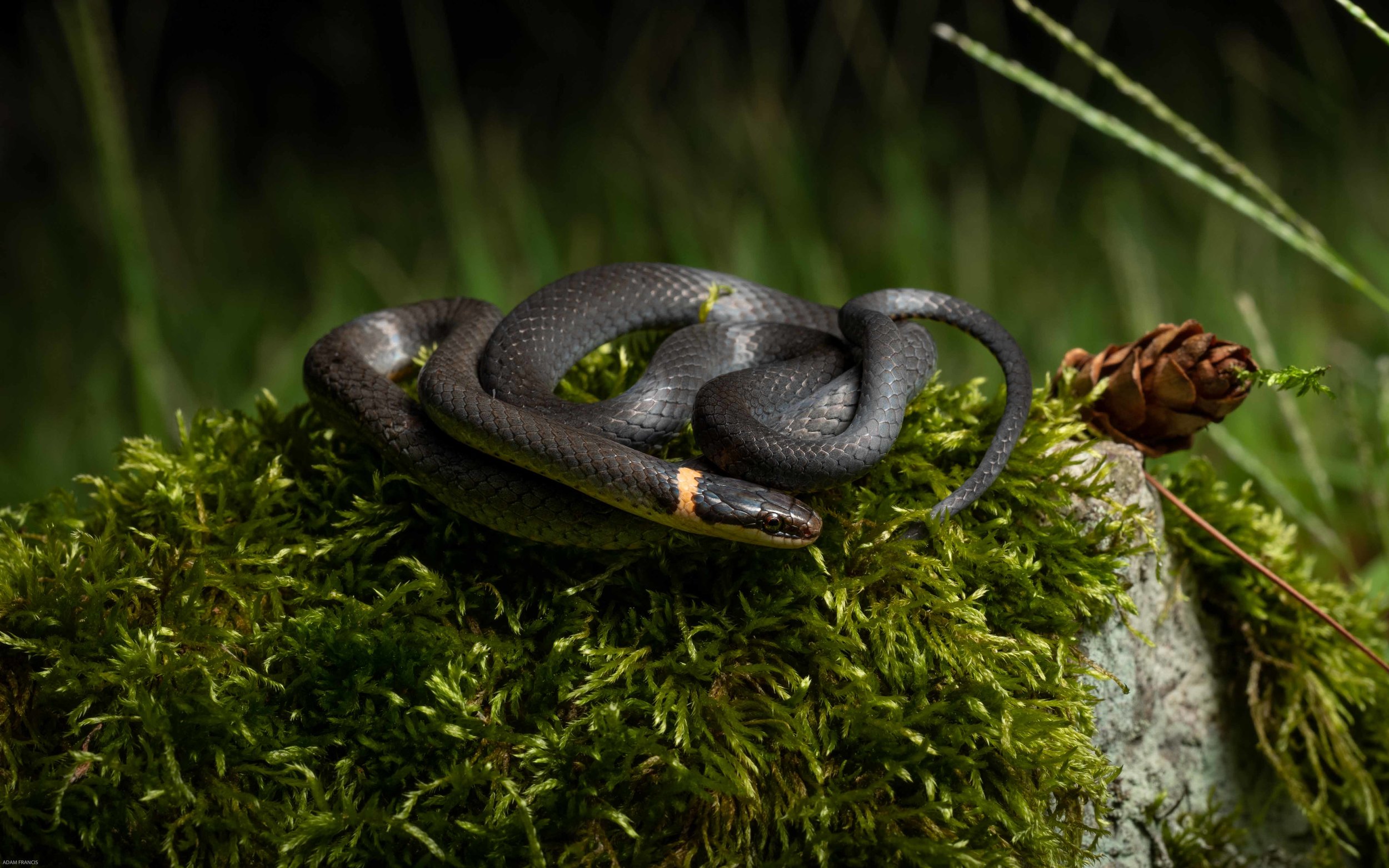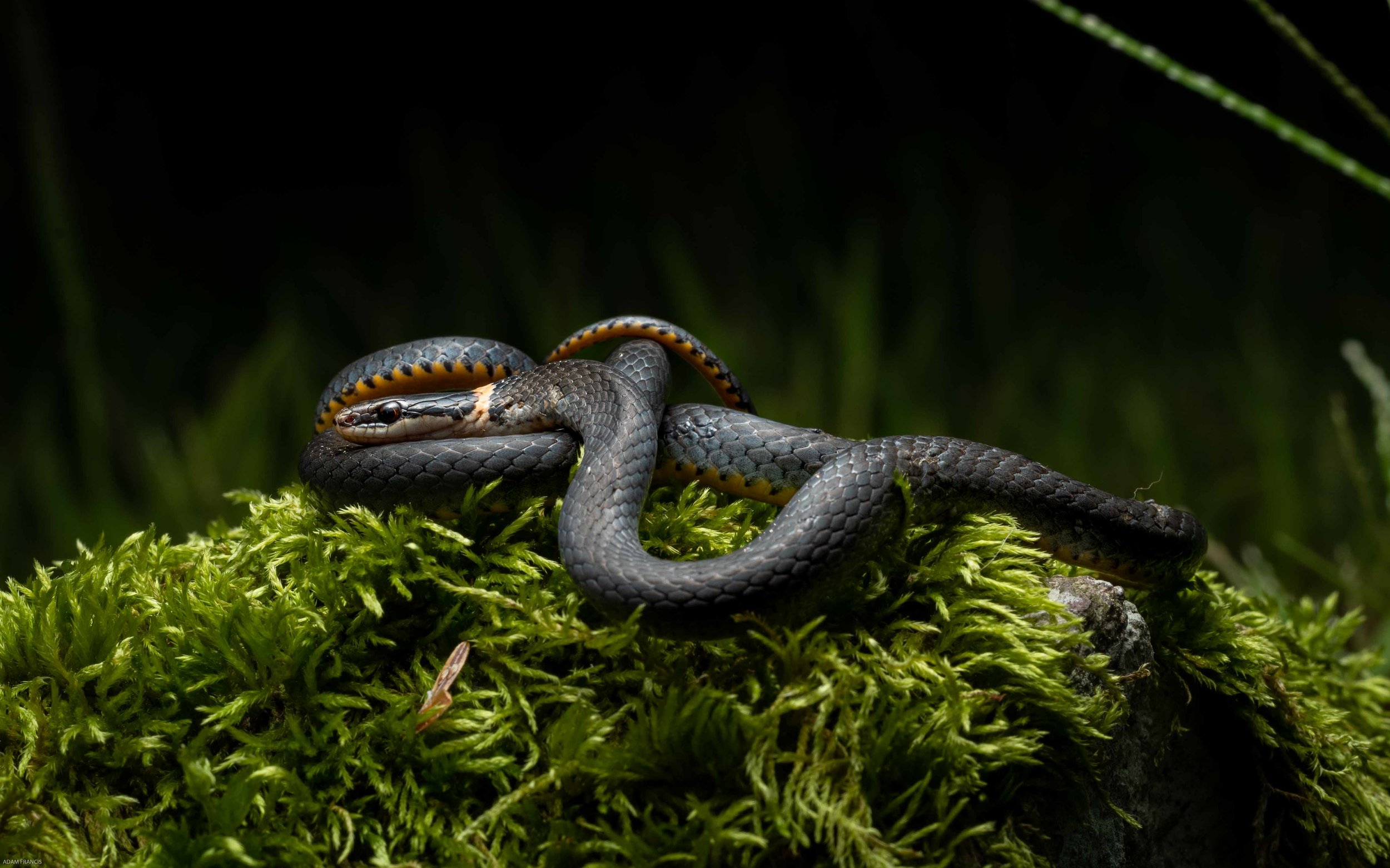SUMMARY
VENOM: None
PREVALENCE: Very common
ACTIVE PERIOD: Active at night
KEY ID FEATURES: Dark grey with yellow belly scales, small black head and yellow collar at the neck
BEHAVIOR: Docile, may squirm and musk if handled but almost never bites
SIZE: Very Small - 25 - 35cm
QUICK ASSESSMENT 0-10
GALLERY
IMPORTANT: Many snakes have significant variance in coloration and pattern even within the same species. There can also be extreme differences in appearance from juveniles to adults so it is important to never assume you have properly identified a snake.




DESCRIPTION
A small inoffensive snake, the Northern Ringneck Snake is very common across its geographical range. Often dark gray with peach or yellow belly scales and a light yellow or peach collar around the neck. Large scales on the head relative to its size and uniform smooth scales on the body. This species technically has a weak venom it uses on its prey but is harmless to humans.
BEHAVIOR
A largely fossorial snake, the Northern Ringneck spends almost all its time underneath rocks, logs and leaf litter hunting its prey and rarely comes out in the open. They can sometimes be found out during the day though more commonly at night. Eat small invertebrates like worms as well as salamanders and other small snakes. Breeding normally in the fall laying 2-7 eggs in late spring and early summer. Can be social and often found together in large numbers under rocks, logs, boards etc.
HABITAT
Often found in wooded areas at both low and medium elevation. Tend to be found in higher abundance near rock piles but can also be found under logs and other debris.
MISTAKEN IDENTITY
NO SNAKE SHOULD EVER BE HANDLED BY ANYONE BUT EXPERTS: Given its small size it could be mistaken for juvenile species of several snakes, but generally unique in appearance with respect to the neck collar. It should be noted that small snakes can be particularly dangerous due to difficulty in properly identifying them and difficulty handling them. As such they should never be handled or approached.

